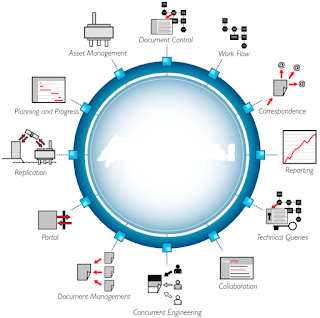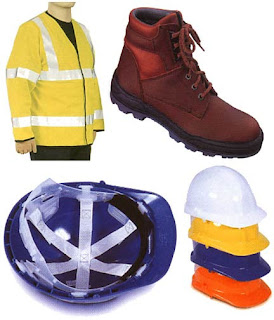First Aid (OIL AND GAS,HSE & EMPLOYMENT TRAINING)
OIL AND GAS EMPLOYMENT TRAINING
FIRST AID
When we talk of first aid, we mean the skilled emergency application of accepted principles of treatment on the occurrence of injury or in the case of illness using facilities or materials available at the time and venue of the accident.
DEFINITION
First aid is the immediate temporary treatment given or carried out in case of emergency, sudden illness or accident prior to the arrival of a doctor/medical personnel or transportation of the victim to the hospital
AIMS & OBJECTIVES OF FIRST AID
1. Preserve life
2. Save life with the application of A B C (i.e. Airway, Breathing, and Compression)
3. To prevent an illness or injury from becoming worse
4. To promote recovery by relieving pain as far as possible.
5. To provide reassurance and comfort to the casualty
YOU AS FIRST RESPONDER/ FIRST AIDER
1. What is the purpose of first aid?
The main purpose of first aid as stated earlier is to preserve life, prevent the condition from getting worse and promote recovery
2. How do we recognize emergencies?
Look for sign that we can see or the patient will tell us of symptoms he may be experiencing i.e. headache, shortness of breath, dizziness, chest pain etc.
3. How do we assess an emergency scene?
What sort of emergency is it? (Medical, fire, chemical exposure, explosion or accident). Are there any hazards on the scene? Is the scene safe for me to go to the patients?
4. How many patients are there?
Where am I? Is there help nearby (shout for help)Is there a good access and exit route?
5. What information can I get from the patient if he is conscious?
Ask him if he knows what happened? Does he have any pains? Is he allergic to anything? Does he have a medical history? Is he taking any medication? Did he eat
4
before the accident? How is he feeling? If patients is unconscious look for signs of life i.e. breathing, swallowing, chest rising, abdominal movement, feel for pulse.
QUALITIES OF A GOOD FIRST AIDER
1. Must have the necessary knowledge
2. Have common sense
3. Have the ability to act quickly, make decision and improvise
4. Have perseverance to continue to try in the face of difficulties
5. Have sympathy, empathy and understanding
RULES GUIDING FIRST AIDER
1. Be calm: Do not panic.
2. Apply common sense: Most cases use your discretion depending on the prevailing situation especially where the first aider and the victim may be exposed to further danger.
3. Do not attempt to do too much if you are unsure of what to do.
4. Reassure victims all the time. This can be demonstrated by words of encouragement.
5. Do not remove victim unless absolutely necessary; that is when the victim is exposed to further danger.
6. Do not allow people to crowd around you.
7. Do not have the victim unattended until the doctor or trained medical professional takes charge.
5
8. Loosen any tight or restricted clothing around the neck and waist to allow easy breathing and blood circulation. Upon approaching the scene, quickly take in as much information as possible and take into consideration the principles D R S A B C D
D – Danger: Always presume that there is some danger, so check for it and deal with any danger to yourself; the victim and by standers e.g. traffic, electricity, infection from body fluid etc.
R – Response: Check for response by talking and asking question and shaking victims shoulder gently.
S – Shout: The first aider must shout for help when there is no response and he is alone with the victim.
A – Airway: Casualty must have a clear and unobstructed airway to be able to survive and maintain an open airway by tilting the head back while placing two fingers to lift the chin.
B – Breathing: Check for up to 10 seconds for breathing, if breathing but unconscious place in the recovery position, this will help to maintain an open airway but if not breathing, start compression at once.
C – Compression: Commence chest compression immediately when casualty is not breathing at the ratio of 3 compression to two breaths (C P R).
D- Defibrillator: A medium used to bring back the heart to its normal rhythm.
For more info and training on this course,visit www.deslogenergy.com/hsetraining
Or Call 07035612321
https://plus.google.com/101168247930816841633/posts/LD2AZ3rBo96
FIRST AID
When we talk of first aid, we mean the skilled emergency application of accepted principles of treatment on the occurrence of injury or in the case of illness using facilities or materials available at the time and venue of the accident.
DEFINITION
First aid is the immediate temporary treatment given or carried out in case of emergency, sudden illness or accident prior to the arrival of a doctor/medical personnel or transportation of the victim to the hospital
AIMS & OBJECTIVES OF FIRST AID
1. Preserve life
2. Save life with the application of A B C (i.e. Airway, Breathing, and Compression)
3. To prevent an illness or injury from becoming worse
4. To promote recovery by relieving pain as far as possible.
5. To provide reassurance and comfort to the casualty
YOU AS FIRST RESPONDER/ FIRST AIDER
1. What is the purpose of first aid?
The main purpose of first aid as stated earlier is to preserve life, prevent the condition from getting worse and promote recovery
2. How do we recognize emergencies?
Look for sign that we can see or the patient will tell us of symptoms he may be experiencing i.e. headache, shortness of breath, dizziness, chest pain etc.
3. How do we assess an emergency scene?
What sort of emergency is it? (Medical, fire, chemical exposure, explosion or accident). Are there any hazards on the scene? Is the scene safe for me to go to the patients?
4. How many patients are there?
Where am I? Is there help nearby (shout for help)Is there a good access and exit route?
5. What information can I get from the patient if he is conscious?
Ask him if he knows what happened? Does he have any pains? Is he allergic to anything? Does he have a medical history? Is he taking any medication? Did he eat
4
before the accident? How is he feeling? If patients is unconscious look for signs of life i.e. breathing, swallowing, chest rising, abdominal movement, feel for pulse.
QUALITIES OF A GOOD FIRST AIDER
1. Must have the necessary knowledge
2. Have common sense
3. Have the ability to act quickly, make decision and improvise
4. Have perseverance to continue to try in the face of difficulties
5. Have sympathy, empathy and understanding
RULES GUIDING FIRST AIDER
1. Be calm: Do not panic.
2. Apply common sense: Most cases use your discretion depending on the prevailing situation especially where the first aider and the victim may be exposed to further danger.
3. Do not attempt to do too much if you are unsure of what to do.
4. Reassure victims all the time. This can be demonstrated by words of encouragement.
5. Do not remove victim unless absolutely necessary; that is when the victim is exposed to further danger.
6. Do not allow people to crowd around you.
7. Do not have the victim unattended until the doctor or trained medical professional takes charge.
5
8. Loosen any tight or restricted clothing around the neck and waist to allow easy breathing and blood circulation. Upon approaching the scene, quickly take in as much information as possible and take into consideration the principles D R S A B C D
D – Danger: Always presume that there is some danger, so check for it and deal with any danger to yourself; the victim and by standers e.g. traffic, electricity, infection from body fluid etc.
R – Response: Check for response by talking and asking question and shaking victims shoulder gently.
S – Shout: The first aider must shout for help when there is no response and he is alone with the victim.
A – Airway: Casualty must have a clear and unobstructed airway to be able to survive and maintain an open airway by tilting the head back while placing two fingers to lift the chin.
B – Breathing: Check for up to 10 seconds for breathing, if breathing but unconscious place in the recovery position, this will help to maintain an open airway but if not breathing, start compression at once.
C – Compression: Commence chest compression immediately when casualty is not breathing at the ratio of 3 compression to two breaths (C P R).
D- Defibrillator: A medium used to bring back the heart to its normal rhythm.
For more info and training on this course,visit www.deslogenergy.com/hsetraining
Or Call 07035612321
https://plus.google.com/101168247930816841633/posts/LD2AZ3rBo96



Comments
Post a Comment